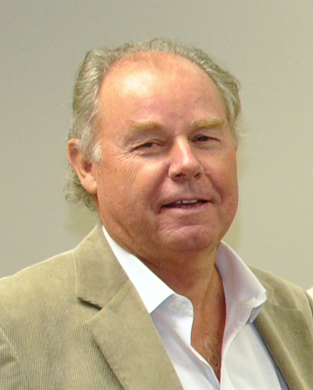- Speaker
- Prof. Jean-Pierre Leburton
- University of Illinois at Urbana-Champaign, USA
- Abstract
The last two decades have experienced rapid technological developments in the search of cheap and high accuracy devices for fast bio-molecular identification. In the realm of DNA and protein sequencing, there has been an increasing interest in the use of nanopores in solid-state materials because of their distinct advantage over biological pores in terms of flexibility in pore design and mechanical strength. Two-dimensional (2D) solid state materials such as graphene and Molybdenum di-sulphide (MoS2) in particular have attracted attention because of their atomically thin layered structure and electrically active characteristics, predisposing them to offer single base resolution and simultaneously multiple modalities of detecting biomolecular translocation. Apart from detecting the individual bases along a DNA in sequencing applications, nanopores have also been sought to identify chemically modified nucleobases for epigenetic applications. One of the most common epigenetic modifications in DNA is the methylation of cytosine and adenine. Hyper and hypo- methylation of these nucleotide sites in the promoter sequences of genes in DNA are considered to be causes of various cancers.
In this presentation, we discuss the potential of two-dimensional solid-state nanopores to recognize methylated sites along the DNA by analysis of the blocking ionic current through the pore as well as by the variation of the electronic current along the 2D membrane, when the DNA translocate through the pore. We utilize molecular dynamics coupled to electronic conductance calculations across the two-dimensional nanopore membranes such as graphene and MoS2. We show epigenetic detection with graphene and MoS2 membranes and predict higher detection resolution for DNA methylation than conventional sensing modality by ionic current blocking techniques.We also describe a new scalable device design based on the use of nanoscale semiconductor materials to detect and identify translocations of many biomolecules in a massively parallel detection scheme.
- About the Speaker
Dr. Leburton joined the University of Illinois in 1981 from Germany, where he worked as a research scientist with the Siemens A.G. Research Laboratory in Munich. In 1992, he held the Hitachi LTD Chair on Quantum Materials at the University of Tokyo, and was a Visiting Professor in the Federal Polytechnic Institute in Lausanne, Switzerland in 2000. He is involved with research in nanostructures modeling and in quantum device simulation. His present research interest encompasses non-linear transport in quantum wires and carbon nanotubes, and molecular and bio-nanoelectronics.
Professor Leburton is author and co-author of more than 300 technical papers in international journals and books, and served in numerous conferences committees. In 1993 he was awarded the title of “Chevalier dans l’Ordre des Palmes Academiques “by the French Government. He is a Fellow of the Institute of Electrical and Electronic Engineers (IEEE), the American Physical Society (APS), the Optical Society of America (OSA), the American Association for the Advancement of Science (AAAS), the Electrochemical Society (ECS) and the Institute of Physics (IOP). He is also a member of the New York Academy of Science. In 2004 he was the recipient of the ISCS Quantum Device Award, and of the Gold medal for scientific achievement by the Alumnus association of the University of Liege, Belgium. He is a Distinguished Lecturer for the IEEE Nanotechnology Council. In 2011 he was elected to Royal Academy of Sciences of Belgium.
- Date&Time
- 2018-10-15 10:30 AM
- Location
- Room: A303 Meeting Room




